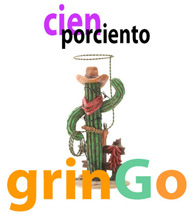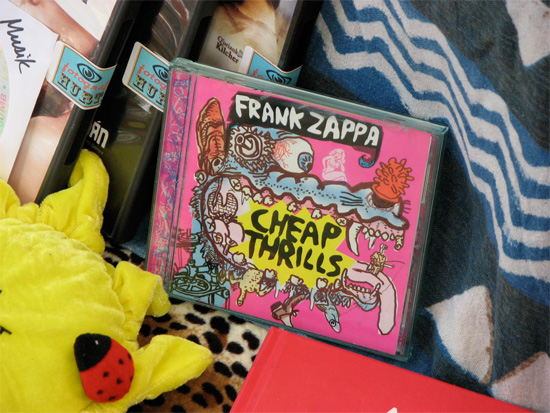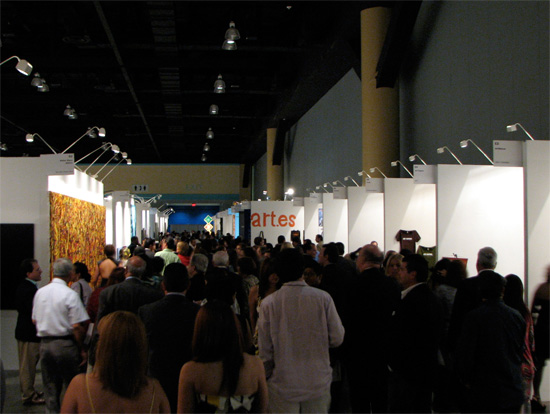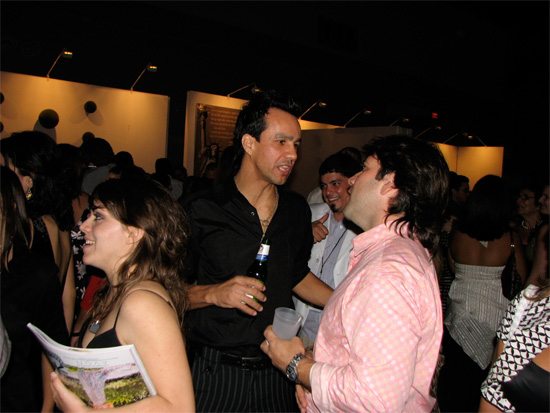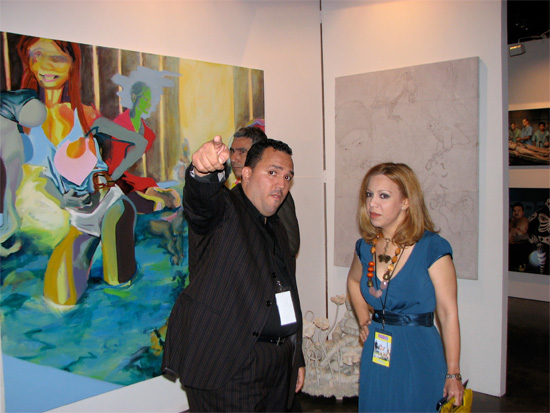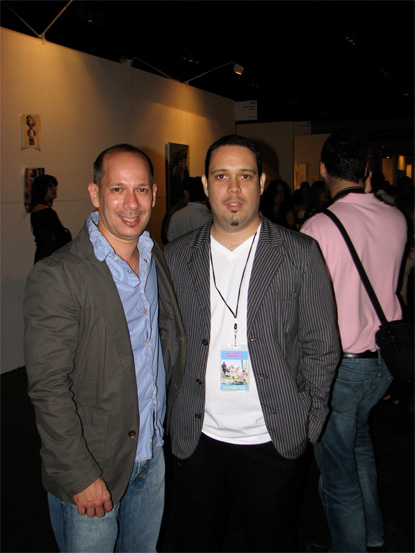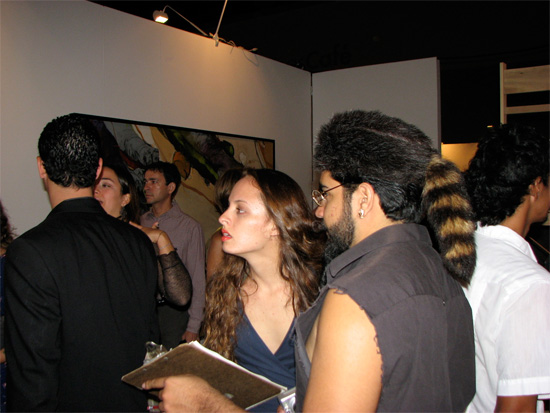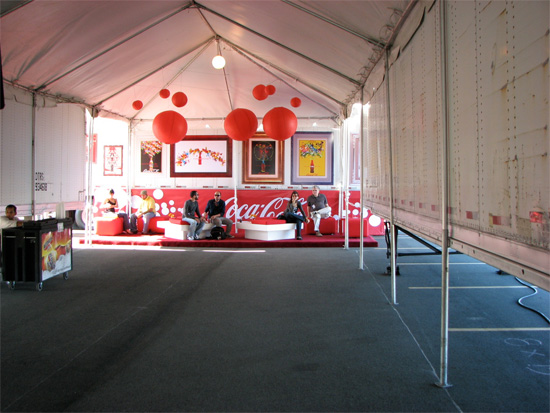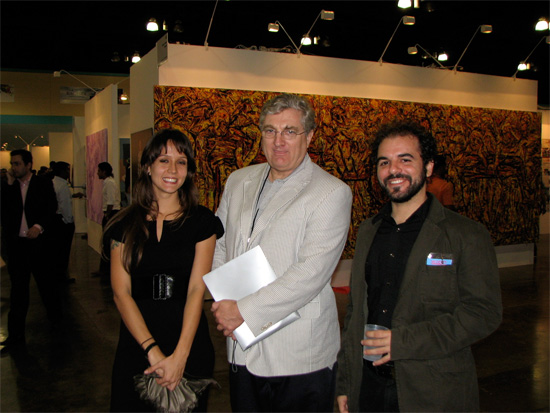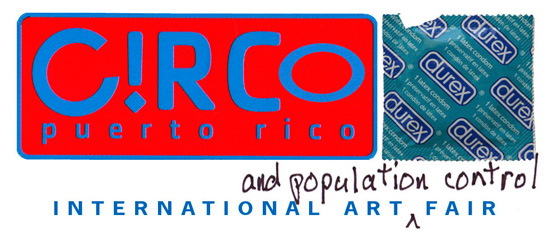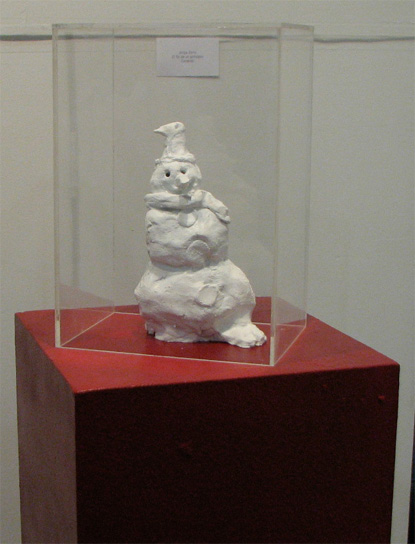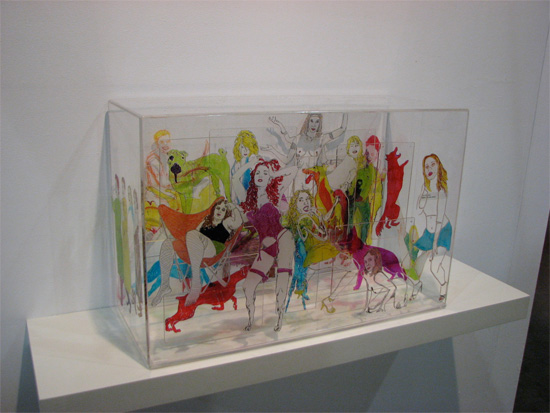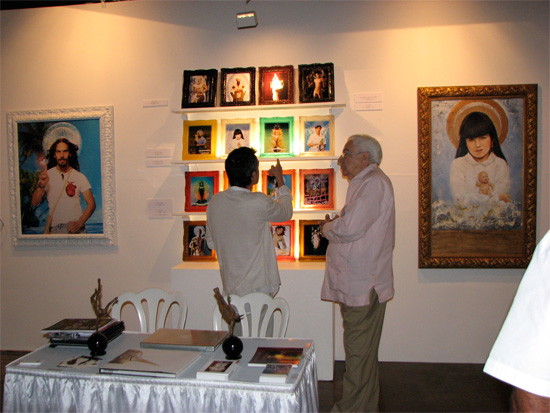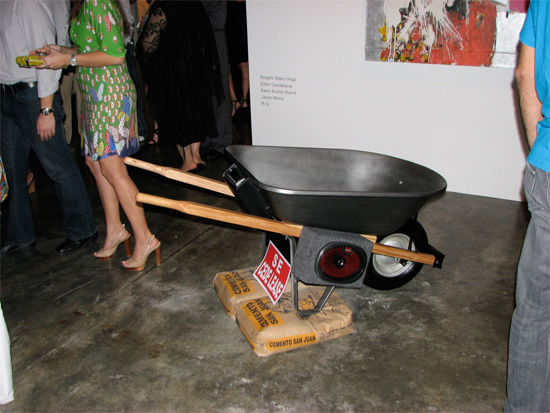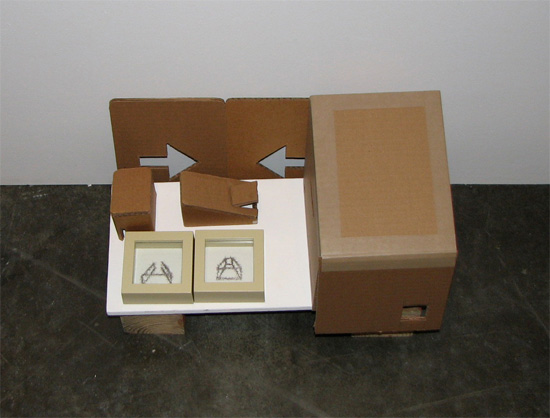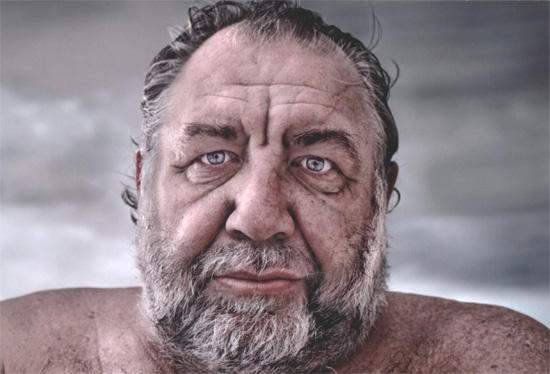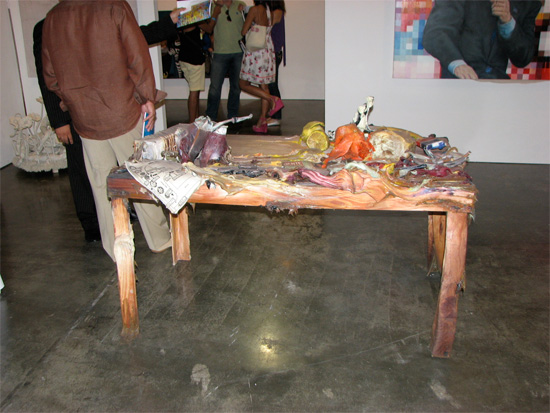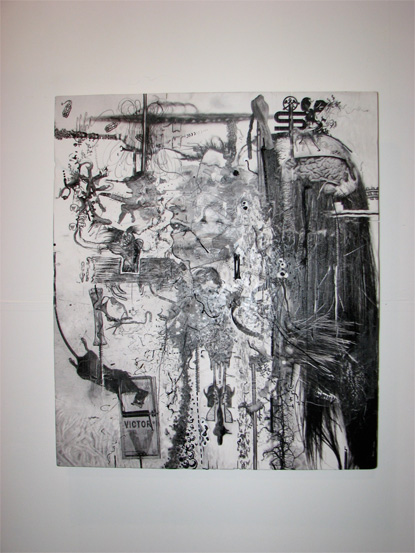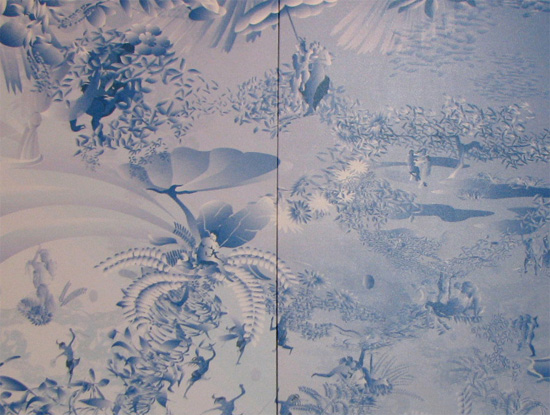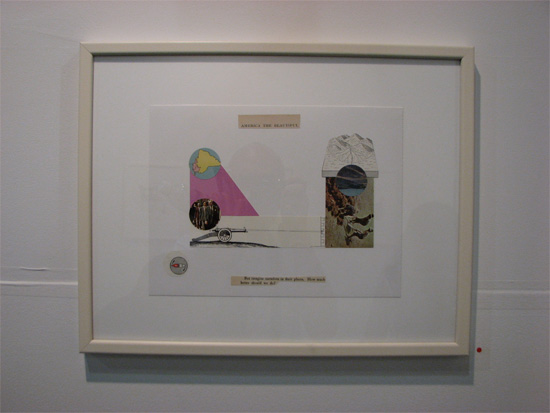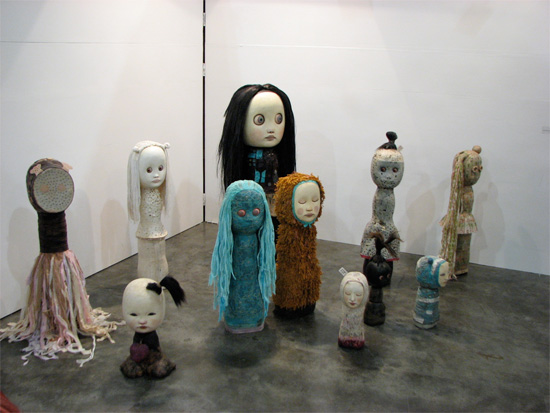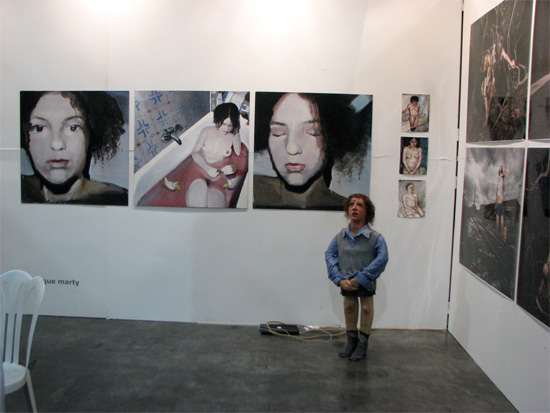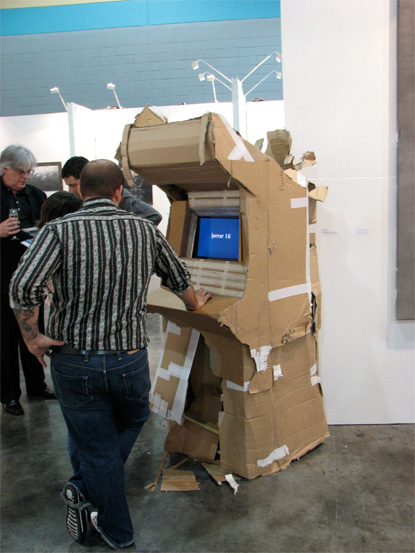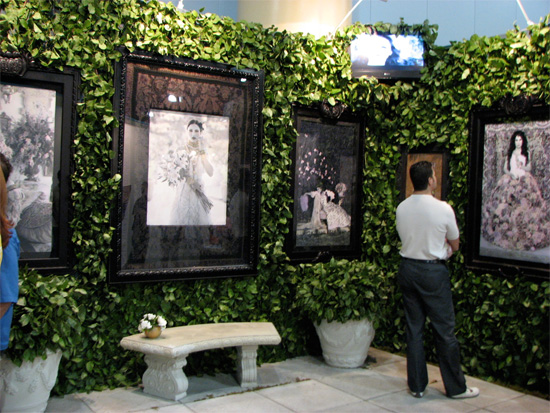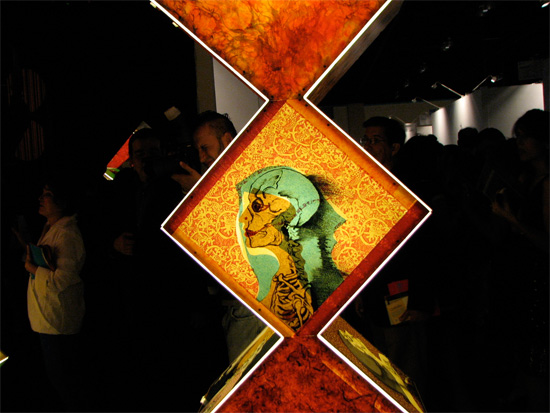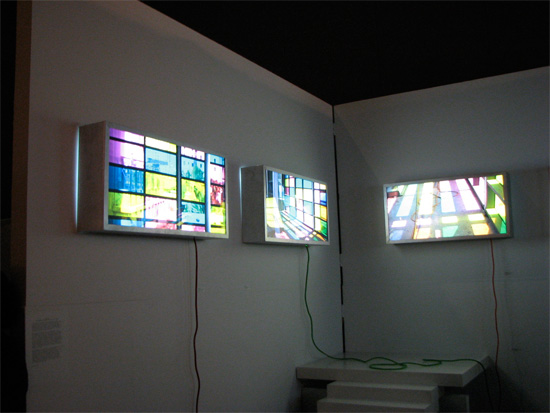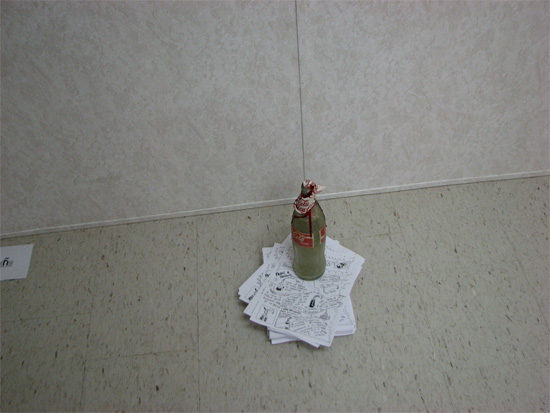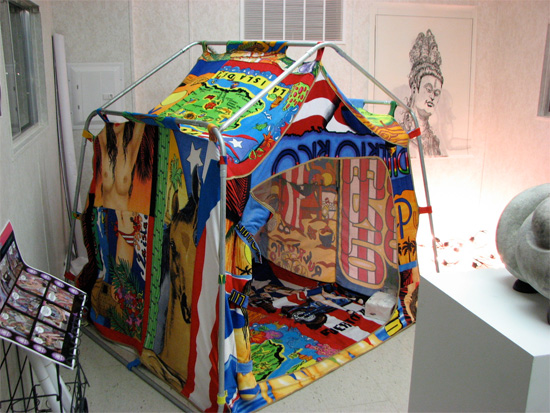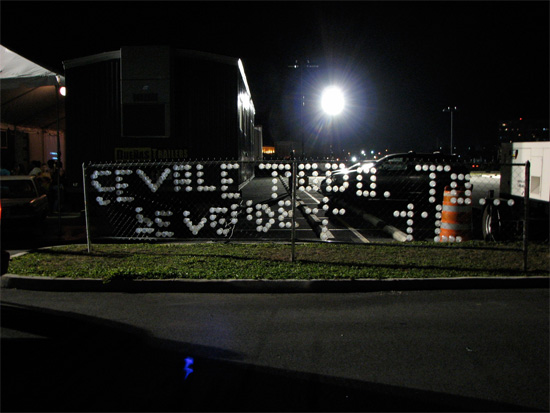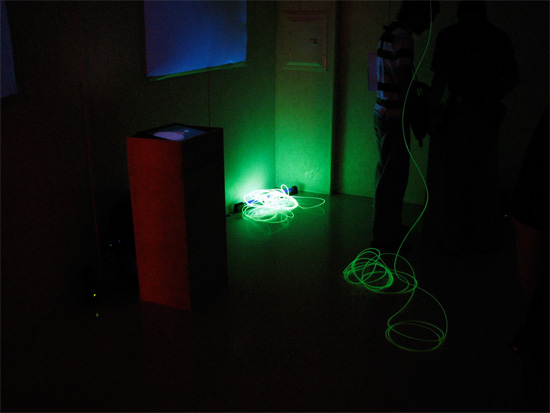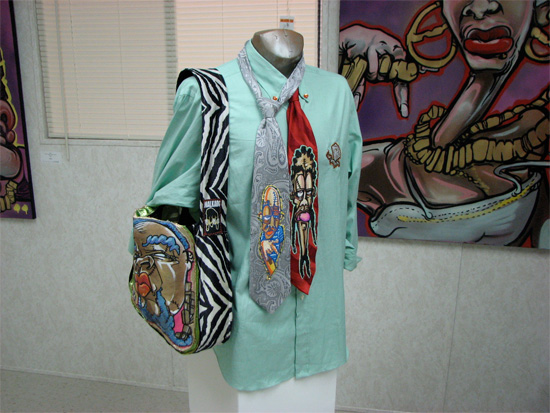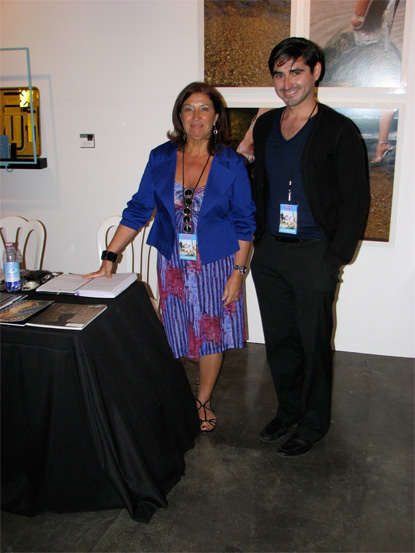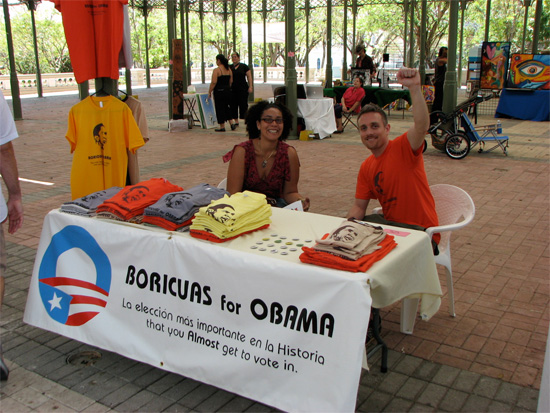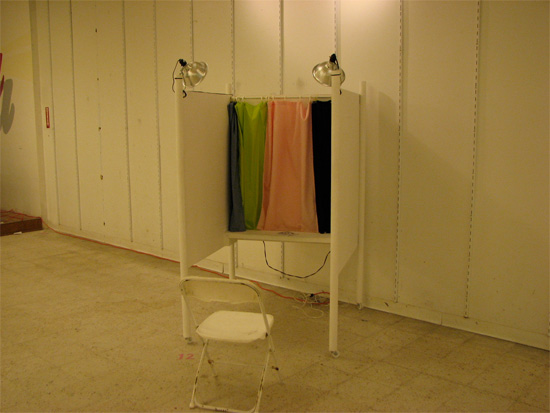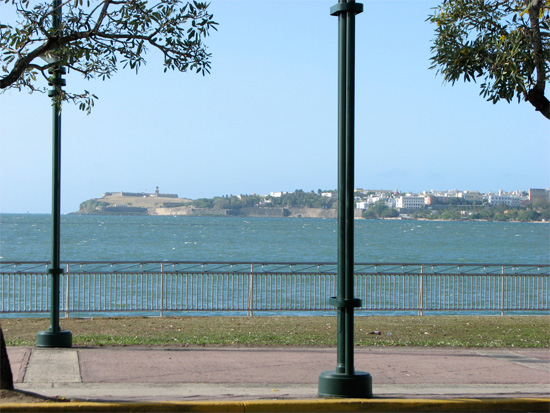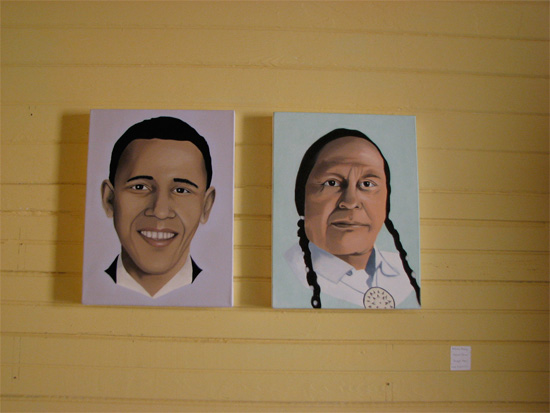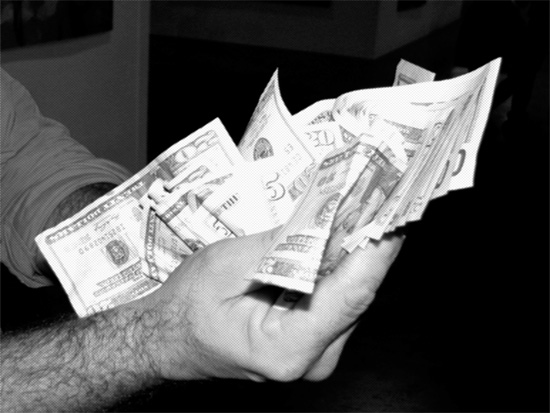|
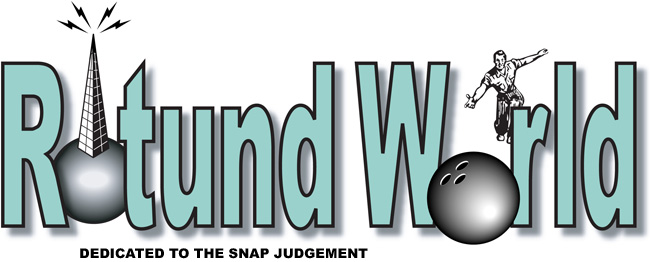
Fair, the Second PartAs promised, we have more CIRCA coverage. In addition to the hair-splitting and pettifogging that comprise our observations of CIRCA 2008, below, we thought we should offer our readers a little sweetness and light. For that we must move some distance away from the Convention Center and cast our gazes upon the doings al lado; taking a walk, as they once sang, on the wild side. If you’ve already read the verbiage below, proceed directly to the next page. Clikea aquí por página dos de las noticias CIRCAnias. Fair is Fair, the First Part
¡Ay, Dios mío! You wouldn’t think that our little CIRCA, that sweet, tropical artfaircito, could be half as exhausting as el gran bruto, the Mutha of All Fairs, Art Basel Miami Beach (ABMB). But here we are, footsore and dizzy with too much at one time and not enough to matter. Sus servidores looked upon the coming of the first weeks of April as a terrier awaits its annual rabies booster. We did what was right, of course, walking ourselves silly over the four days of the latest edition of Puerto Rico’s own international art fair, setting out with the grim assurance that by gumption and mother wit alone we could make sense of the manic too-muchness of it all, from Friday night’s mock-tony opening to the interminable fade of the following Monday afternoon.
It began with the usual, patently snoozy speechifying by the fair organizers, who wore the dead eyes and bonkers grins of the seriously sleep-deprived. Then the doors flew open and we were greeted with lurid, fair-ready, sometimes fluorescent artworks lining the labyrinthine aisleways of booths, so like a cattleyard. The scene was awash with bosomy would-be divas, glad-handing, tallboy-clutching bohemian posers, and natty swells mugging relentlessly for every camera in sight. We were not the least disappointed. At the first booth we wandered into, a pin-striped dealer was actually punching the air with a princely digit, commanding a minion to close a sale or perhaps alerting her to the presence of ne’er-do-wells. The usually sullen element—by which we mean our artist pals who were representing their own works at one booth or another—while not exactly beaming, did not glare at the camera as is their custom but presented themselves with the rumpled aplomb of teenagers at their first sales jobs. Shades of Davy Crockett, here’s firsthand evidence we saw a beaver-tail hat!
The 2008 edition of CIRCA had a sprinkling of artist’s projects on the periphery of the main action—fewer this year than last, tamer, too—and at a safe distance outside the Convention Center proper a collection of four semi-truck trailers housed projects with zero commercial potential, mimicking the containers at ABMB. Coca-Cola was not shy about announcing its sponsorship of these “CIRCA Labs”—Coke has become the official co-opter of Puerto Rican artists in the last year or so, having profited enormously by hiring four young grafiteros to make designs for Coke cans while simultaneously giving the graffiti-hating mayor of San Juan, Jorge Santini, the finger—but that did not stop most of the artists involved from doing mildly provocative to mind-bendingly stupefying projects. More about CIRCA Labs later. For now we wish to assure you that however much we tried, we were never able to make a lick of sense of CIRCA 2008, nor do we believe that any art fair has behind it a reason more complicated than making a buck. As one dealer assured us, “the walls are not falling down, at least,” which lead many a fair-goer to observe that the 2008 edition was an improvement over last year. No one could put their fingers on why this might be, but we heard the refrain over and over: better art, higher-tone dealers, etc., etc., though frankly we doubt it. We firmly believe that everyone involved so wants CIRCA to succeed, to be the Little Fair that Could, that they rarely give it the critical eye. Many dealers who were ebullient last year, sales or no, seemed a bit deflated by this year’s leveling off, or worse, of what they were able to move. Yet everyone we talked to expressed satisfaction with their experience. Go figure.
It all went by in a blur. If you want some vaunted expertise, or at least a manic string of pick hits, name-dropping, glib commentary, and the touching of many bases, tune in to Walter Robinson’s take on CIRCA 2008 at artnet.com. The Waltster jetted in as usual to catch some rays, fatten himself on local mofongo and arroz con habichuelas, ogle the talent, take a bunch of snapshots, and hang out for a few hours with local hipsters so he could collect some original lines to sprinkle among the platitudes. By now, Pedro Vélez has surely unleashed a torrent of wild raving at his punzante, muy sabrosa Box Score, and the less said about that the better. Vélez will have a ton of snapshots at least as fuzzy and off-kilter as our own. The perfect island antidote to Robinson’s smooth carpetbaggery. As for us, all we can offer you right now is a random bunch of often misidentified images which, we believe, truly reflect the vast, chaotic spread that CIRCA has achieved in three years. Actually, the fair itself has been solidifying nicely, drawing into itself and sharpening its features as any truly serious commercial enterprise must. It’s the exponential growth of surrounding events, often having no official connection to the fair, which is giving CIRCA its Man-eating Blobish appearance, that of the crazed spectacle that many art fairs seems to mutate into before you can say, “¡Ayeeeeeeeeee! ¡Ja ja ja ja ja ja ja! ¡Cabrón!”
This year we heard about probably fifteen far-flung gallery openings, collective exhibitions, panel discussions, collection visits, and flea markets that we were absolutely required to attend to if we hoped to maintain our groove credentials, of which we got to perhaps six. We will begin, cyclone-like, at the vortex of things, the fair itself, and work our way outward. Likely we’ll do this in two parts: the fair and its environs now, and a look at what went on in Santurce (Hipódromo 610 and LA15), Cataño (Cataño Distrito Cultural), Caguas (Angora 2), and the amazing Pulguero de los artistas, when we’ve had a chance to catch our breath, probably in a few days. We’ll go to Museo de Arte Contemporáneo (MAC) as well to visit openings of exhibitions by Victor Vázquez and José Morales. As we warned you, we’re proceeding in no particular order, with no point in mind. Because there wasn’t any! However, we do think it appropriate to begin our coverage with a brief stop at the terrifically retro, choicely weird booth of Madame Lyn-Go-Tee, during Lisa Ladner’s El pulguero, one of the better moments of CIRCA 2008. Though not, apparently, one the fair organizers seemed willing to admit to. We espied the Frank Zappa album right off and hoped to take it home, but after a phone call to the mysterious Ms. Go-Tee (or is it Madame Lyn?), the best that her junk-tender could offer us was $25 for a copy of the CD, to be picked up the next day. ¿WTF? We passed of course—Cheap Thrills is no Freak Out (“Help, I’m a Rock”) or Absolutely Free (“The Duke of Prunes,” “Call Any Vegetable [. . . and the chances are good the vegetable will respond to you.]”)—only to receive a scolding email from the freaky diva herself stating that we were not appropriately bargain-minded; once again, in all our nerdliness, missing the whole point. But that’s fine, we missed the point from the get-go. Opening night, as we said, was suitably swirly, jam-packed, and scene-making. We heard from several dealers that they actually sold work that night, although it was all downhill from there. One of the most frequent dealer complaints: two hours to allow collectors to peruse the premises is about a day too short. The poor schlubs—the collectors, that is—had to galumph down the aisles like elephants pursued by a pride of hungry lions. We weren’t there, but it probably wasn’t pretty. On subsequent days we witnessed a lot of finger-drumming and nervous pacing, but we thought that the halls were humming decently considering that real bargain-hunting doesn’t begin until the fair’s final hours. We missed the few in-house events—Haydée Venegas clucked at us for being absent from a panel she’d organized on curating, and the following day El Instituto de Cultura Puertorriqueña (ICP) had invited several stellar guests to talk about “Latin American and Caribbean biennials and triennials”—though we lamented that there were not more such foros, as was the case in years past. These, ranging across topics and generations, did not always rise above the obvious and the snoozy, but they never lacked for lively moments.
Unlike the daring Robinson—and, no doubt, the crusty Vélez—we’ll hazard no guesses as to which booths or artworks or artist’s projects were “best,” or whether or not this year’s CIRCA surpassed last year’s—the figures will tell the cold, hard truth about that, no need for the babble of sus servidores to try to explain what you’ll soon read in black and white —but we did stumble upon an artwork which cried out to be nominated as the worst of the fair, in a high-pitched, bent-capped, come-hither quaver. This was, no question, Jorge Zeno’s El fin de un principio, a little ceramic statue that was part misshapen snowman, part mudpie circus clown. Yikes. Under Plexiglas no less. ¡Wao! Other notable encounters of an entirely haphazard kind:
We have notoriously complained about a few basic things which continue to plague CIRCA’s approach to what, in grander circumstances, would be called “infrastructure.” Last year we pointed out, to no one’s amusement, that the booth walls still sported their unhandsome seams and bare hinges. As the above photo makes obvious, the fair took half-measures—if you can call it that—by taping the seams, without further ado. Are we the only ones this bothers no end?
Draw you own conclusions about the “look” of CIRCA 2008. As regards the lamentably few spaces allotted to individual artist’s projects, to our way of thinking these ranged from the opaquely bizarre to the less-than-hoped-for. They glowed and shimmered and might as well have had “Art Fair Attraction” written all over them. Even Ada Bobonis, always the exemplar of underdoing and rigor, succumbed to the art fair imperative of the runway- oriented spectacle with her neony light boxes. No matter how sophisticated the concept, garish is as garish does. Amidst the fair’s generally excellent progress toward a more business-like enterprise, we find the gaudy drift of its artistic initiatives to be kind of depressing. CIRCA’s early years may have suffered from unruliness, with sprawling, often gigantic installations dominating the floor—remember the first year: Charles Juhász- Alvarado’s big trumpet and Jorge Rito Cordero’s fun, many-bicycled ridable contraption, Colecticleta?—but surely the organizers can give artists some rope without throttling them with it.
Let others venture opinions about trends, artistic hierarchies, and so forth. The real fun to be had during CIRCA was outside the Convention Center, starting in the parking lot. The so-called CIRCA Labs batted about .500, with W&N’s half-car and FGA’s ear-splitting noise and tattered poster installation—with a free CD for the sharp of eye, all compliments of Pedro Vélez, Gean Moreno, and Jorge Castro—taking honors. Art Tracking—by which we mean the tireless efforts of Abdiel Segarra, Ralph Vázquez, and many, many friends (if we understand it correctly)—stuck to the usual formula of no formula, a mélange of more or less cool dabbling by the not-yet-arrived. There was a trailer full of coiled light and playable, game-like consoles—Espacio: Región de Murcia, España, very fun—and one featuring paintings and painted merchandise by the artist known as Rimx, sponsored by Espacio 304.
CIRCA Labs might have had its heart in the right place, but its trailers were far away. A shuttle between the so-called labs and the Convention Center’s front doors could not, by itself—as least as far as we saw—provide much of an audience for work which the artists were in no way half-assed about. It was a puzzling appendage to the hugger-mugger of fair’s main action, as if the organizers wanted to show some true artistic güevos in the midst of so much unabashed hustling, but were too embarrassed to fully admit it. If it was up to us, we’d shitcan the gimmick called “In the Spot”—a thorough misrepresentation of “curating” in which artworks are chosen from among the merchandise on the floor and mounted on a freestanding wall, usually by a bona fide art curator, who is then forced to stand before a small audience and pretend that this was an act of aesthetic decision-making —and bring the barbarians into the sanctuary instead. A good friend of ours actually enjoys “In the Spot” very much, comparing it to having a personal shopper who shows you how to put together the little purse with the darling hat and the colorful pashmina; how to create the whole ensemble, in other words. But frankly we’re aghast. If CIRCA really wants to embrace the most edgy—and no one who’s paying attention really expects it to—the fair should put them front and center, or at least side by side with the much more “acceptable” individual artists projects. One way for the organization to hedge its bets would be to place any revolting, highly political, or otherwise outlandish projects inside of cages, thereby showing nervous nellies among the visitantes that the fair is willing to embrace strong ideas but doesn’t flinch from protecting the public from them, either. This strategy is not without precedent, since the Whitney Biennial in 1993 featured a terrific performance by Coco Fusco and Guillermo Gómez Peña in which the couple was paraded before the public as savages from some unspecified third world outback. There were, indeed, cages involved, and when Fusco and Gómez Peña had to go to the bathroom, they were lead away on leashes. It was an artist-inspired idea, true, but we don’t imagine that the likes of Pedro Vélez or W&N would object to such a display as long as it meant being among the anointed.
Don’t get us wrong. Much of what Nieves, Nogueras, Barragán and company have accomplished in three short years is just astonishing. Dealers like Miami’s Diana Lowenstein, who left after the first year’s fiasco swearing never to return to Puerto Rico, are back and happy about it. The fair continues to give Puerto Rican artists and art aficionados a firsthand glimpse at what’s going on beyond the horizon, and many, many dealers, as if bonked by free-falling magic coconuts, continue to believe in the fair’s promise, in spite of the relative paucity of immediate returns.
As you’ll see on the following page, the fair is also giving rise to countless satellite activities, almost entirely generated by artists. These do not fit into anything resembling an art “economy”—and the fair is, or should be, largely about that—but they’re moments which reaffirm the vitality of the local contemporary art scene, and they’re as spontaneous, exciting, and sociable as a good nightclub concert. Above are some teasers. You may now wish to proceed to part two of our CIRCA 2008 coverage. On the other hand, here is the route back to the Rotund past.
|
